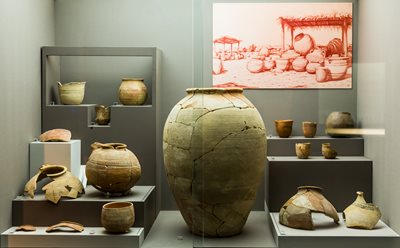Sharjah Archaeology
About The Museum
Sharjah Archaeology Museum first opened its doors in 1993. It moved to its current location on May 10, 1997.

Why you should visit Sharjah Archaeology Museum
This museum offers you the opportunity to explore the rich heritage and deep-rooted history of Sharjah. The reports of many excavation expeditions showed that humans have settled in Sharjah for a period of not less than 125.000 years. The museum sheds light on the lifestyle of the region’s inhabitants from the stone, modern, and the following ages until the rise of Islam.
Admire an authentic historyThe museum contains all the archaeological artifacts that were discovered in Sharjah. The mission of the museum is to preserve, interpret, and exhibit all the artifacts that have been found in Sharjah since the beginning of the excavations in 1973 up until now. The continuous excavations showed that Sharjah boasts a proud, rich deep-rooted history. Settlements and villages were built on its land thousands of years ago.
Visitors get the chance to learn about the civilizations that developed in the region since the Stone Age up until today through the artifacts, currencies, jewelry, pottery and ancient weapons showcased in the museum. The archaeological findings reveal the connections and relations between Sharjah inhabitants and their neighbours in the Arabian Peninsula, as well as with other civilizations. They also show the expansion of commercial relationships from the east of the Indus Valley to the west of the Mediterranean islands.
Explore the tombs, cemeteries and houses through the models displayed in the museum, and learn about the first forms of writing which appeared in this area more than 2500 years ago.
Highlights from the collection Opening Hours Saturday to Thursday: 8:00 am - 8:00 pm Friday: 4:00 pm - 8:00 pm Timings are subject to change during public holidays and Ramadan. For more information call the museum.Note: This information is to the best of our knowledge. We are not responsible for changes in day/timings/contact information.
Disclaimer: SCG is not responsible for the content of any external websites. All external websites open in a new window.





